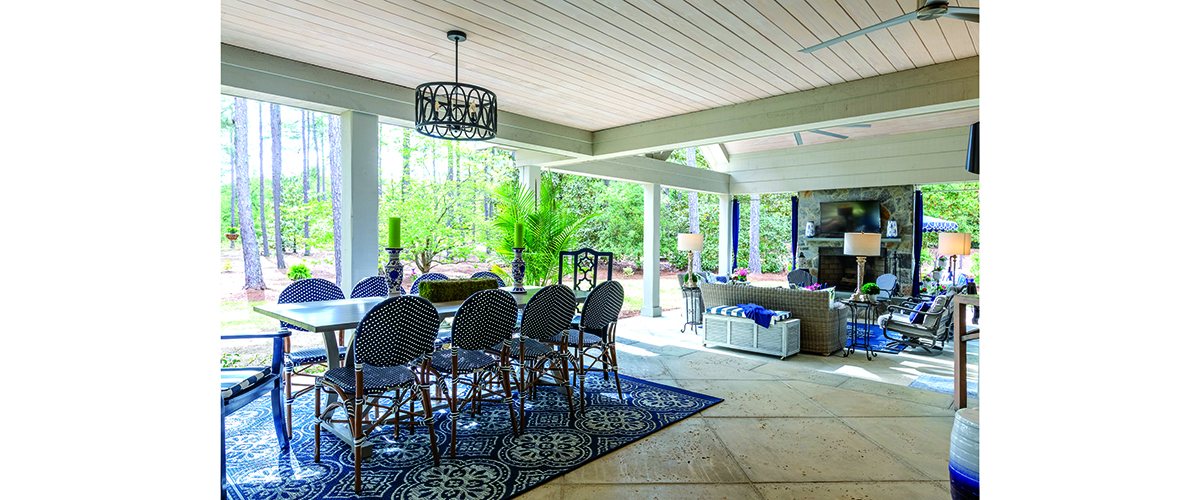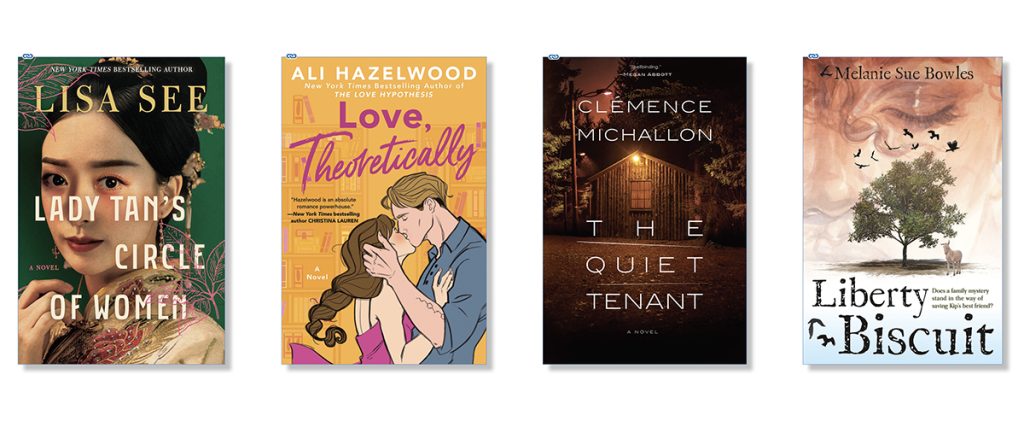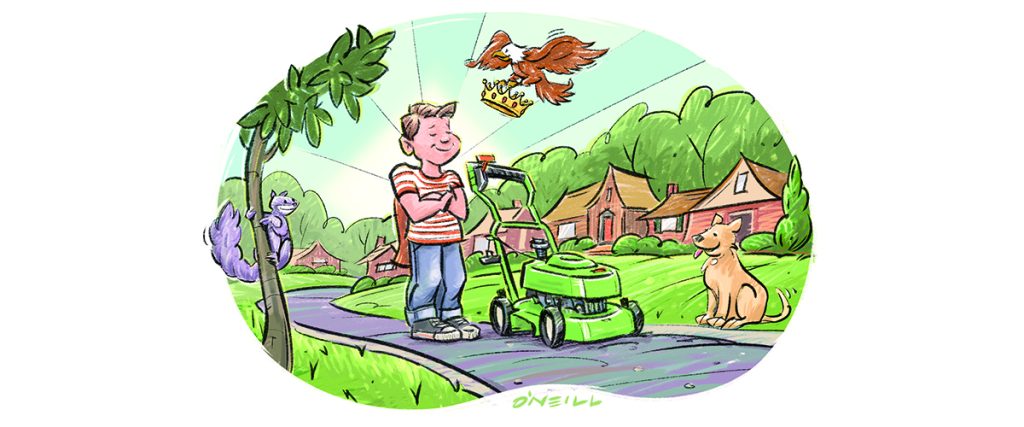On the Clock
Going to the head of the line
By Lee Pace
A putt will drop at Los Angeles Country Club late on the afternoon of June 18 and another U.S. Open champion will be crowned. Some 2,500 miles to the east, knowing eyes will watch the proceedings and acknowledge the gesture: Next.
“That’s when it will really sink in,” says John Jeffreys, course superintendent of Pinehurst No. 2, site of the 2024 Open. “It’s exciting and energizing when you think that it’s actually here.”
Golf course architects Bill Coore and Ben Crenshaw, who orchestrated a significant restoration of No. 2 in 2010-11, have each had occasion to come through Pinehurst in the winter and spring of 2023 and walk the grounds. To reflect on the work they did over a dozen years ago and how it was received for the back-to-back U.S. Open and U.S. Women’s Open in 2014 and how it’s been maintained since brings a smile to their faces.
“It just looked to me like, ‘Go play,’” Coore says. “The presentation is just perfect. It hasn’t changed in nine years. If anything, it’s better.”
Adds Crenshaw: “It looked fabulous. There’s not much to do. The bunkers look great. The wire grass is terrific. The greens are beautiful. The outskirts are just striking. Every time I get around it, I get inspired.”
Jeffreys takes comfort knowing there’s not a massive to-do list during the year leading up to a major championship. There are no rough lines to draw in, no lush grass to promulgate, no tiger tees to bring out of storage.
“The main difference from ’14 is the greens,” he says. “This is the first time the U.S. Open has been played on ultra-dwarf Bermuda. Generally they’re a little firmer, a little faster than what we had before. We’ll concentrate leading up to the competition on improving the quality of the ball roll-out, working on the texture of the leaf.”
John Bodenhamer, chief championships officer for the USGA, remembers that the lead-up to the 2014 Open was warm and dry. The unknowable is what Mother Nature will deliver next spring.
“We were blessed with weather that allowed us to control the firmness and playability of course No. 2,” he says. “If the weather is different, we will adjust accordingly. The one aspect of No. 2 that we will be studying very closely once again are the sandy natural areas. We will want to make sure that they are prepared in a manner that presents an appropriate penalty for missing the fairway. Otherwise, we plan to just let Pinehurst be Pinehurst, as Donald Ross’ masterpiece will surely produce another memorable U.S. Open.”
A decade after the last Open, the golf world will find a village and club much the same as it ever was — like in 1962, when the USGA first came to Pinehurst for the U.S. Amateur and in 1999, when it staged its first U.S. Open on Donald Ross’ tour de force. There are still no golden arches in the village. There are still no right angles at street intersections. The carillon in the Village Chapel still rings on the hour.
“How many times today do you hear some hot young star in any sport hear the name of a Hall of Fame player in his sport and say, ‘Who was he?’” muses former USGA Executive Director David Fay. “When you get to Pinehurst, that changes. It’s impossible not to get caught up in the great history. It’s everywhere. It’s where you look, it’s in the air, it’s in the turf, it’s in the images on the walls, it’s in the church bells. You can almost feel the ghosts coming out.”
But there is so much that’s different, too, since the golf world saw Martin Kaymer cruise to victory the third week of June 2014 and Michelle Wie capture her first major championship seven days later.
For one, by the time the first tee shot is struck on June 13, 2024, the USGA itself will have opened a new Golf House Pinehurst on ground just a 5-iron from the resort clubhouse. Ground was broken in June 2022 on a building designed to harken to Pinehurst’s earliest structures, with wide verandas punctuated by columns, hipped-roofs, dormers, textured clapboard and shake siding.
There’s a new traffic circle between the Carolina Hotel and the golf hub to the south, and the big one at a major thoroughfare intersection just over a mile to the east toward Southern Pines has been widened and has some 50,000 vehicles moving through it daily. (And shouldn’t we call them “roundabouts” in tribute to their British heritage and Moore County’s considerable Scottish roots?)
Out the south door of the clubhouse is the innovative nine-hole Cradle Course that opened in 2017 and has since been a Disneyland of golfers of all ages sipping beverages and clipping wedge shots, and beyond that is the No. 4 course rebuilt by Gil Hanse to blend seamlessly with its No. 2 neighbor — wiregrass here, craggy bunkers there and nary a straight line on the horizon. The Carolina Hotel will have completed a multi-year renovation with all the guest rooms rebuilt and new public areas with a coffee house, porch seating and fire pit.
One building on Magnolia Road in the village sat vacant in 2014, its former existence as a steam plant long buried, and just down the street, the Manor Inn remained boarded up, this 1923 inn a victim of the 2007-09 global financial crisis. Visitors now can eat smoked pork with a terrific blackberry-infused barbecue sauce at the Pinehurst Brewing Company, which opened in 2018 in a building that in 1895 provided steam for the town. The Manor was refurbished and reopened in 2020 with finely appointed guest rooms and the North & South Bar proffering a menu of nearly a hundred whiskies from around the world.
My, the dominoes that have fallen since that 2009 decision by Pinehurst owner Bob Dedman Jr. and resort President and COO Don Padgett II to tear up the elegantly groomed No. 2 with all its grass, water and fertilizer and crack open a time machine that would take the course back to its mid-1900s heyday.
“I thought, what a bold stroke to attempt to take Pinehurst No. 2 back to the way it looked for all its glory days — after sand greens, that is, we don’t want to go quite that far,” Fay says. “It would be much the same as how Oakmont showed its boldness by pulling out all those Christmas trees planted in the 1950s.”
Padgett began to wonder after the 2005 U.S Open at Pinehurst if the excessive use of long grass to fight immense ball flight distances had gone too far on a course known for having width and a visual palette that perfectly reflected its Sandhills heritage. Fortunately, Fay and fellow USGA officials Mike Davis and Jim Hyler agreed with the idea and were on board in February 2010 when Coore & Crenshaw began rebuilding the course. The look, playability and the course’s ability to stand up to modern talent and equipment were applauded by competitors, spectators and the national media.
Padgett uses the word radical to describe what’s happened in Pinehurst in the last decade-plus.
“Bob Dedman feels like it all started with No. 2, we were doing something radical to the place,” says Padgett, now retired and playing a lot of golf in Pinehurst. “There’s nothing more radical than what we did. It changed the way he thought about things. ‘Let’s go all-in’ was the mindset. Pinehurst is way more current than it’s been probably since the 1940s. In recent times, we’ve always had a hint of a museum. It’s not that way anymore. Pinehurst still draws on its history, but the actual experience is pretty current. There’s a lot of life in the place.”
There’s a new No. 10 course being built by Tom Doak on a site in Aberdeen; it will be open in time for the golfing deluge in June 2024. Coore was seen in April rattling around the woods himself, poking for ideas and a routing for Pinehurst No. 11.
Of course, there are lots of details to iron out over the next 12 months. Like, how will the practice range, situated on the south side of the clubhouse for the 2014 Open, fit onto The Cradle? How will the USGA tip its cap to the 25-year anniversary of Payne Stewart’s victory in 1999? How will it look and feel when the World Golf Hall of Fame, launched in Pinehurst in the early 1970s, comes full circle and reopens in the new USGA facility? And how many of the par 4s will Jon Rahm reach with his driver?
Look toward Los Angeles on Father’s Day and try not to get run over by the falling dominoes. PS
Lee Pace has written over four decades about all of the golf architects at Pinehurst, from Donald Ross to Gil Hanse. Contact him at leepace7@gmail.com and follow him on Instagram at @leepaceunc.














































